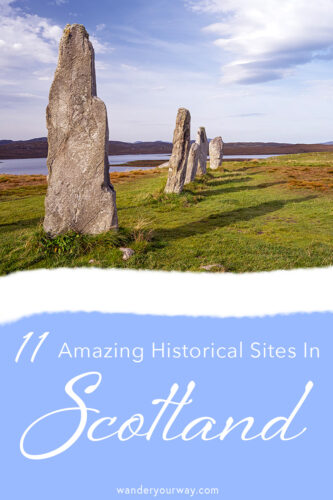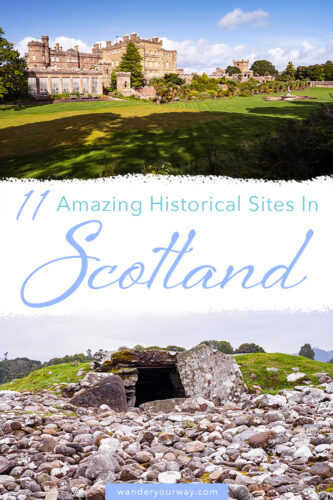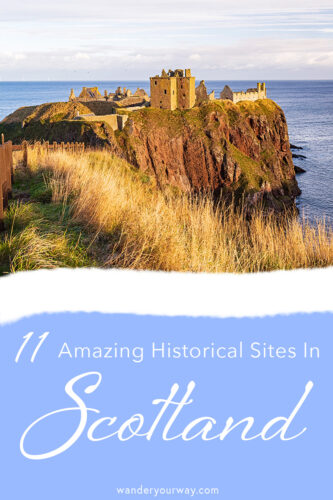11 Fascinating Historical Sites in Scotland You Need to Visit
There is no shortage of historical sites in Scotland.
From neolithic sites to more ‘recent’ sites dating in the 1700’s, Scotland has such a rich and diverse history.
As I made a list of all the historical sites I’ve visited on my Scottish adventures, I realized that I’ve been to quite a few.
But I have a list just as long of sites I still want to experience.
In this post, I decided to focus on my 11 favorite sites.
I tried for 10 but I just had to add one more!
I’ll give you a wee bit of info on each one so you know what it’s all about.
Then I’ll tell you where it’s located, logistics for visiting and why it’s one of my favorites.
Let’s dive into Scottish history — well, just a wee bit!
Castles
Doune Castle
This castle in Perthshire and very near a more famous castle, Stirling Castle, dates back to the 1300’s.
It’s very fortress looking, in my opinion.
But it is significant to Scottish history as it was the seat of Robert Stewart who was the 1st Duke of Albany and the Governor of Scotland.
He got the title of Governor of Scotland in 1386 when his older brother was too sick — and also politically weak — to govern.
He had that title until his death in 1420.
One of the things that is unclear is whether Doune Castle was actually finished.
There is speculation that it may only be half of what the original builders intended.
We’ll never know.
This historical site in Scotland did serve as a royal retreat between about 1424 and 1603.
But it never seemed to be as organized or comfortable as Stirling or Edinburgh.
The claim to fame for Doune is its ties to the movie Monty Python’s Holy Grail.
This cult classic was filmed at Doune and Terry Jones, one of the Monty Python members, does a lot of the audio narration.
This castle also features in Outlander and Game of Thrones.
Location: Town of Doune in Perthshire, near the city of Stirling and Stirling Castle.
Opened: 1 Apr to 30 Sept: Daily — 9:30 to 17:30pm (last entry is 16:45)
1 Oct to 31 Mar: Daily — 10:00 to 16:00 (last entry 15:15)
Entrance fee for adults: £10
All info can be found here
What I love about it:
I love the Monty Python connection and the audio guide with clips from the Holy Grail movie.
I also love that there are narrow passageways and steps. It feels like it would be a fun castle to have been a kid…places to hide!
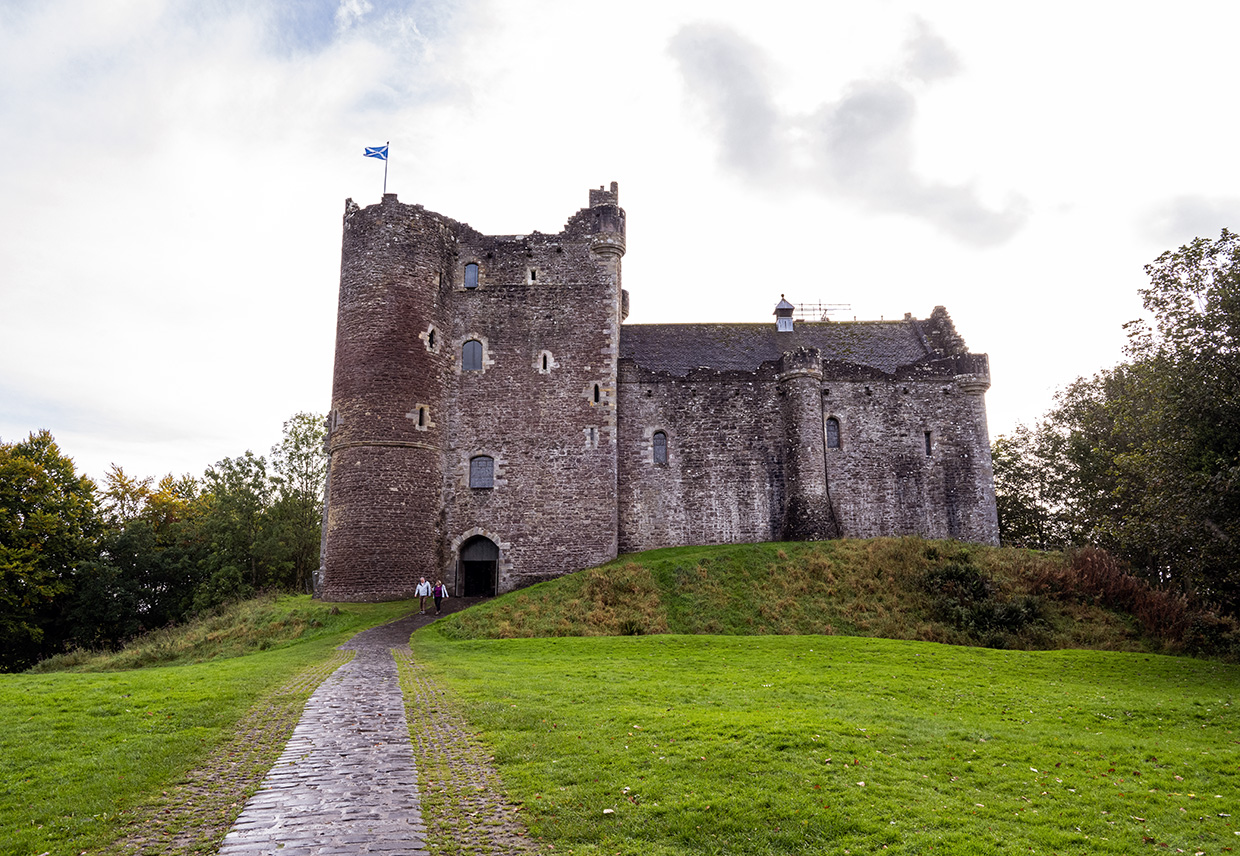
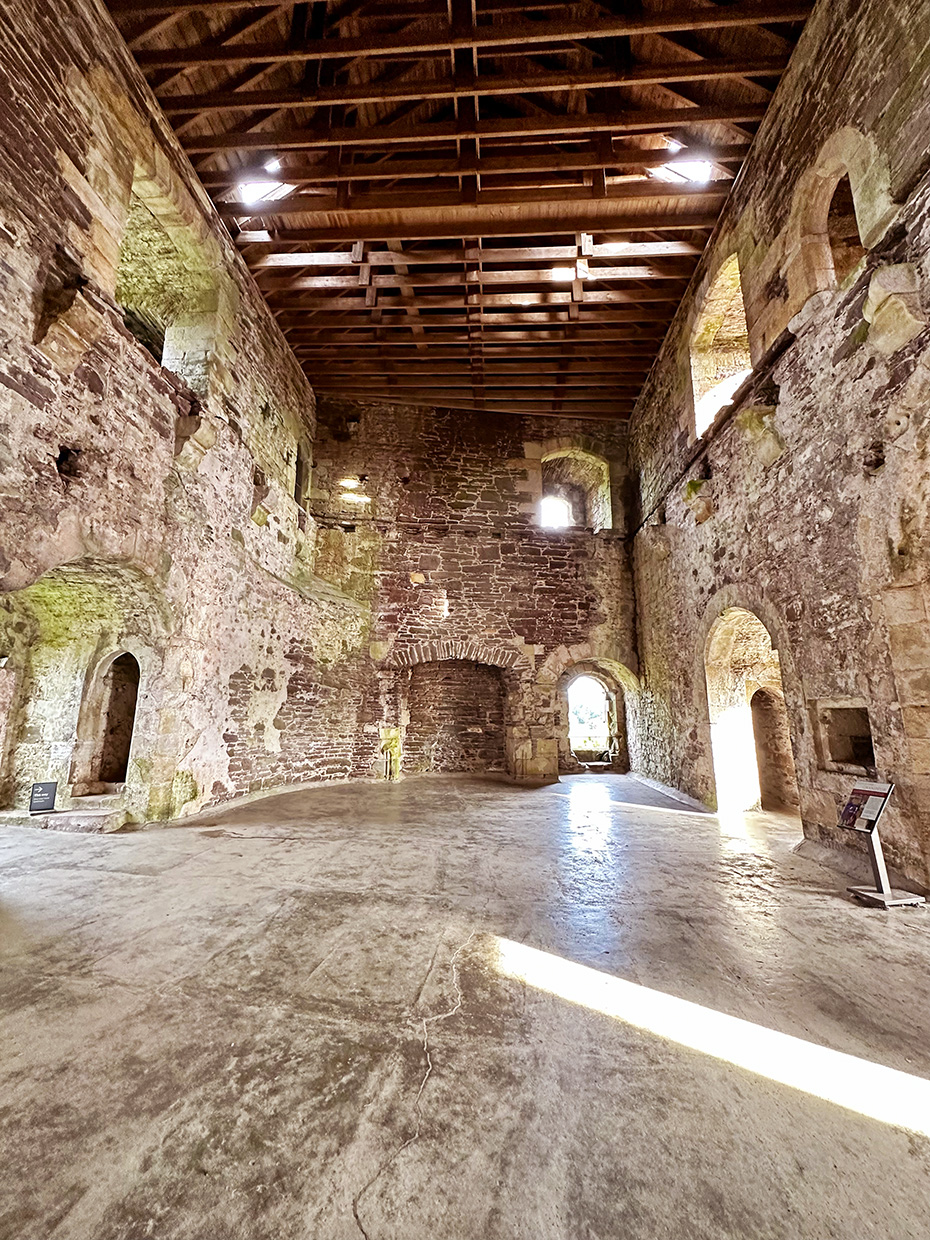
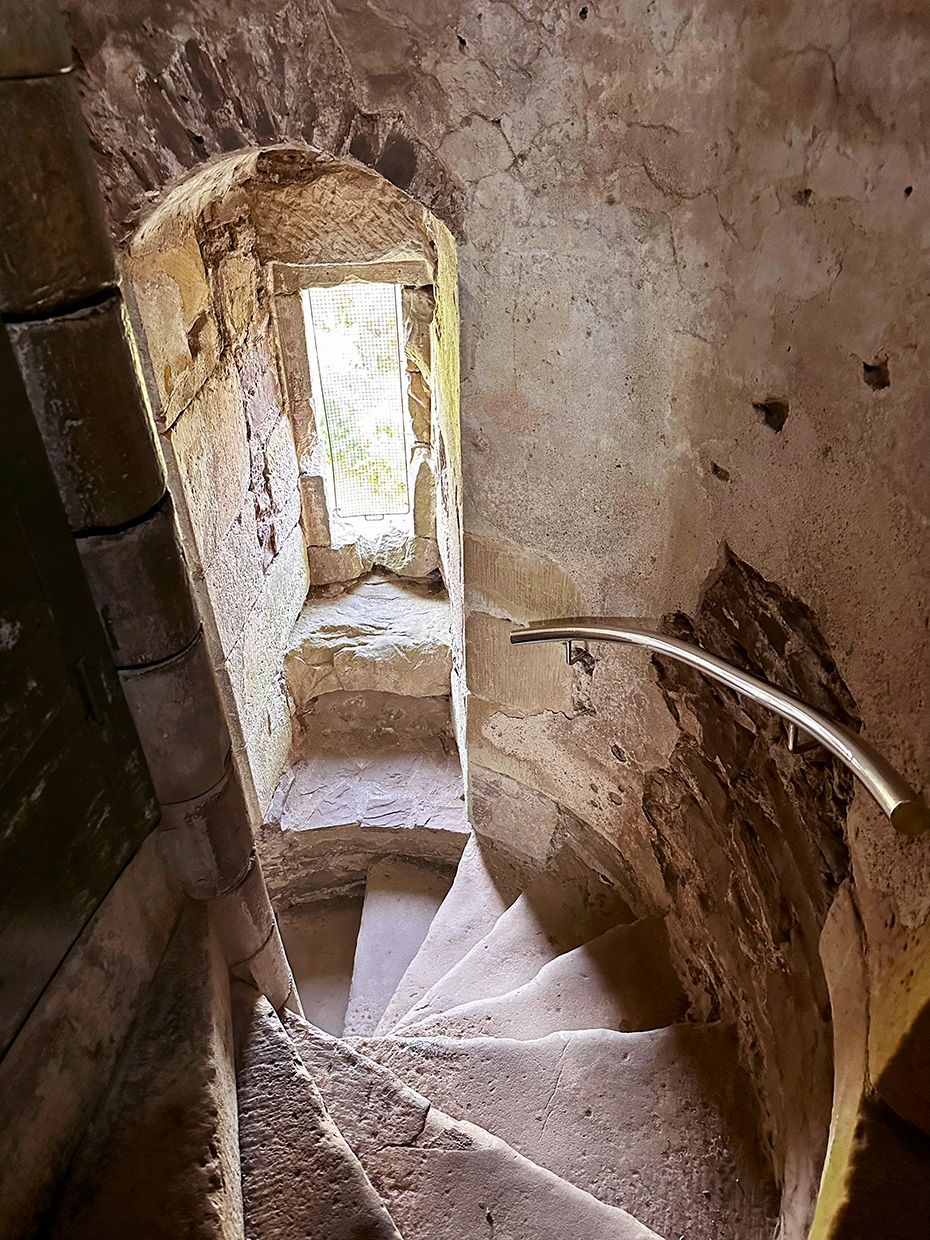
Blair Castle
This historical site in Scotland is also in Perthshire, in the village of Blair Atholl, but has a completely different feel from Doune Castle.
First built in 1269 as Comyn’s Tower by John Cummings who was a squatter.
He built it while the Earl was away as he thought it was a strategic spot.
The Earl returned, kicked Cummings out but thought the tower was a good idea.
So he kept it.
By 1532 a great hall was added (the present day dining room).
It was in 1740 that the expansion really began as the 2nd Duke began to make it into what you see today.
So it was through the 1700’s and into the early 1800’s that Blair Castle was expanded and embellished.
Location: Village of Blair Atholl, just up the road from Pitlochry.
Opened: From early spring until October 31: Daily from 10:00 to 17:00 (Last entry at 15:45) See website for exact dates.
Entrance fee for adults: £17.50 online or £18.50 at gate
There is an app you can get as this is a self-guided tour. The app is great!
All info can be found here
What I love about it:
I love some of the exquisite furniture and the magnificent plaster work on the ceilings.
And I love the ties to Queen Victoria who actually did stay here. There is an actual document of hers in the castle.
I also love the walled garden as it’s a peaceful and tranquil spot with a pond, trees all around and views of the peaks of Cairngorms National Park.
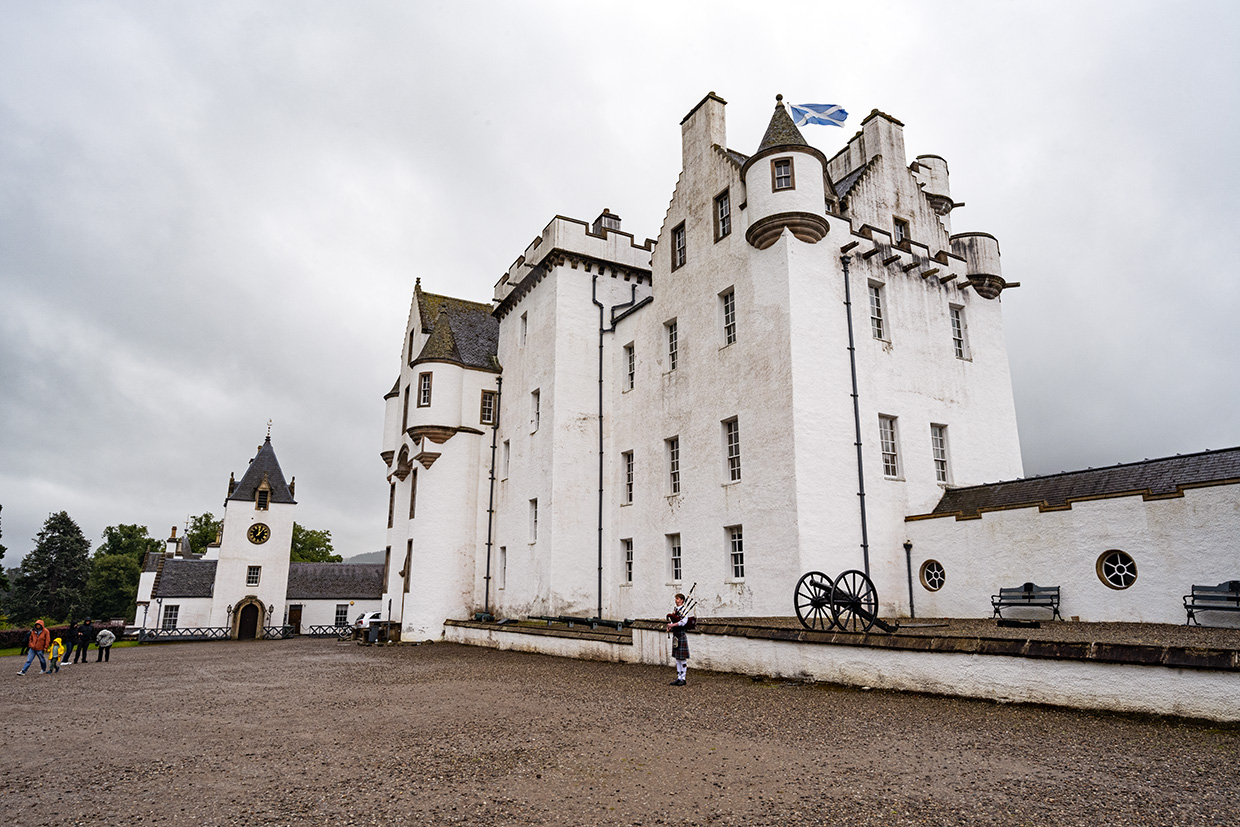
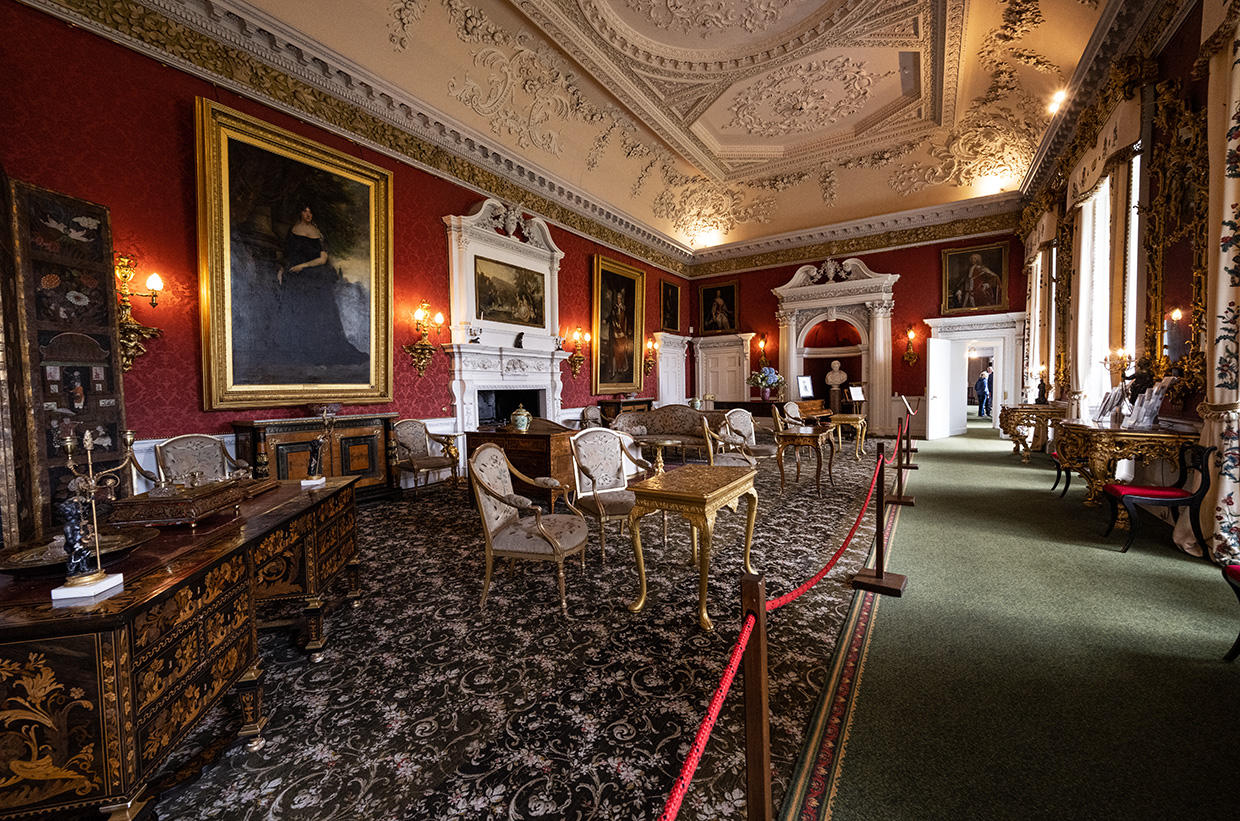
Dunnottar Castle
Dunnottar Castle is one of those “Wow” castles.
Mostly from the standpoint of its location — up on a cliff over the sea.
This historical site in Scotland is mostly ruins now.
I will fully disclose that I have not actually toured “inside” it.
But I have at least seen it enough to appreciate it.
Dunnottar Castle itself dates back to 1392 when Sir William Keith, Great Marischal of Scotland built what is now The Keep.
There was an earlier structure, a church, that dates back to 1276 or so.
The ruins of that still can be seen at this historical site in Scotland.
Anyway…
Dunnottar saw a lot of history over the years with a couple of visits from Mary Queen of Scots, keeping the crown jewels of Scotland safe and the eventual forfeiture of the castle by George Keith, 10th Earl Marischal in 1716.
George Keith was part of the failed Jacobite uprising to overthrow King George I so he kind of had to let go of his title and estates.
Lots of intriguing history at Dunnottar!
Location: Just south of the town of Stonehaven in Aberdeenshire.
Opened: From 1 April to 30 September 9:00 to 18:00
1 October to 26 October 10:00 to 17:00
27 October to 31 January 10:00 to 15:00
1 February to 28 February 10:00 to 16:00
1 March to 31 March 10:00 to 17:00
Last entry one hour before closing
Entrance fee for adults: £11.50 either at the castle day of or online in advance.
All info can be found here
What I love about it:
The location is a photographer’s dream.
As Bo Faser says, “It’s a spectacular ruins!” And that it is. Just stunning!
Plus you know me, I love places that leave a little something to the imagination.
Dunnottar definitely does this!
It’s definitely one of the best historical sites in Scotland for a wow factor.
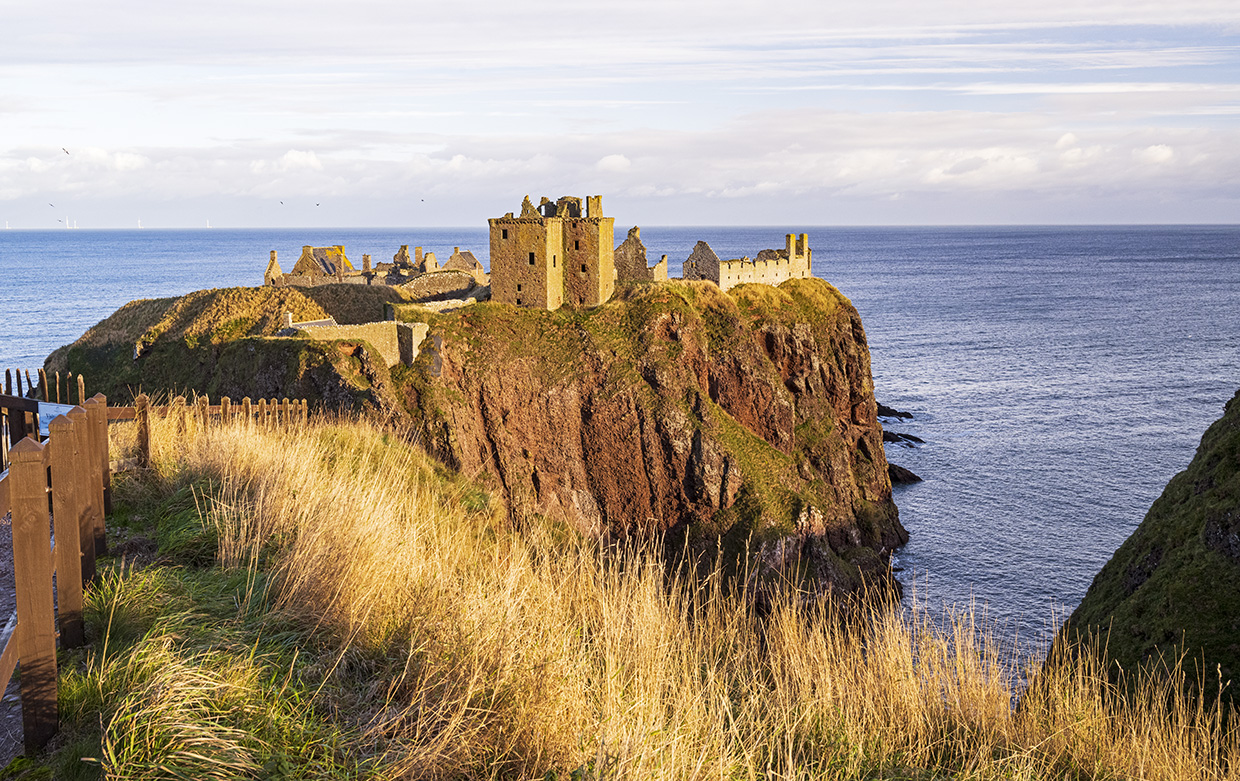
Culzean Castle
The flagship site of the National Trust for Scotland, this is an impressive castle.
Located in Ayrshire, near the town of Maybole, Culzean Castle is one of the “newer” sites on my list, dating to the late 1700’s.
This castle was the idea of David Kennedy, the 10th Earl of Cassillis.
The Earl was a man who wanted to show off his wealth and status.
So he hired architect Robert Adam — Scotland’s most prominent architect of the time — to rebuild a previous more simple country house into the grand castle it is now.
There is also a lot of land at this historical site in Scotland.
So you can spend an entire day here touring the castle then wandering the trails through woodland and more formal, manicured gardens.
Location: 12 miles south of the town of Ayr in Ayrshire.
Opened: From Late March (appx) to early November 10:00 to 16:00. Grounds are open more year round.
Entrance fee for adults: £20 for the castle and the park. While it seems high, it’s worth it!
All info can be found here
What I love about it:
The castle itself is pretty amazing. It has a wow factor when you first see it.
The Round Drawing room and the kitchens were some of my favorite rooms.
Add in all the land around it and the location by the sea and this site is incredible. Give yourself a full day to explore this historical site in Scotland.
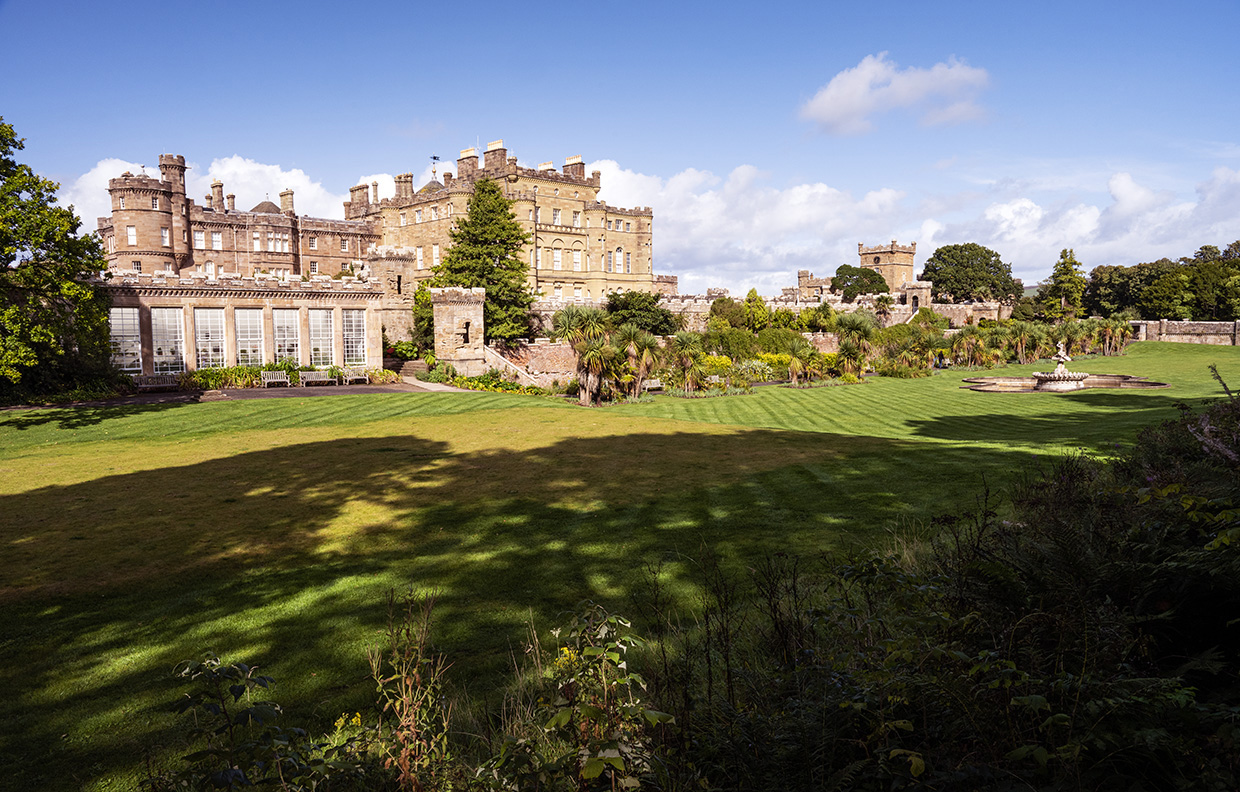
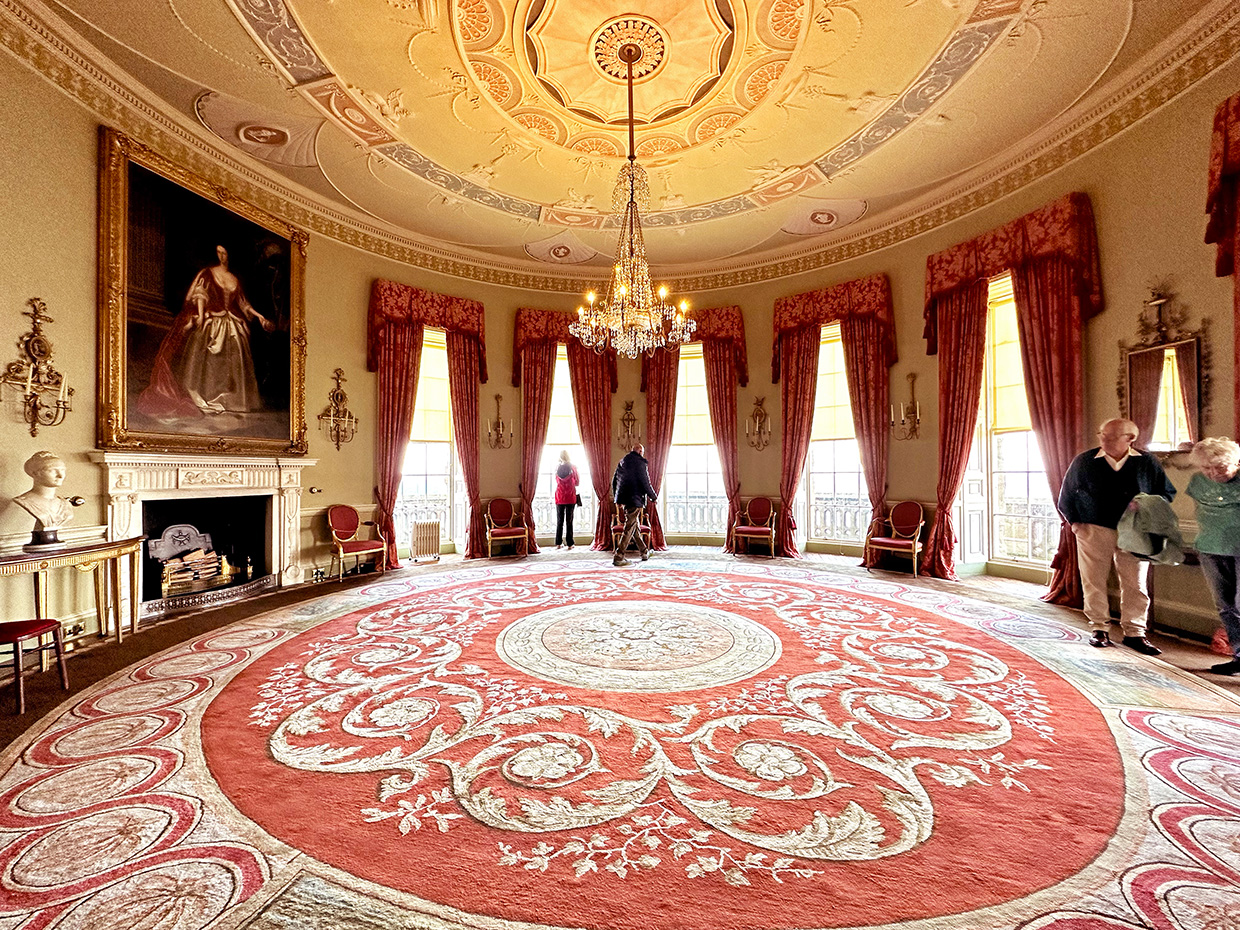
Religious Sites
Rosslyn Chapel
This historical site is just a short drive (just under 10 miles) from Edinburgh in the Midlothian region.
And this chapel is magnificent!
Rosslyn Chapel was founded in 1446 by William St Clair, the 3rd Prince of Orkney.
This is one of the historical sites in Scotland that goes back and forth from being beautiful to falling into disrepair.
Seriously.
Throughout the centuries this site gets fixed up then either is destroyed (at least some of it) or is neglected.
Finally in 1995 The Rosslyn Chapel Trust was formed to care for this fabulous chapel.
It’s in 2003 that Rosslyn Chapel popped into international fame when Dan Brown featured it in his best selling novel The Da Vinci Code.
And when a movie is made from the book, they film scenes at the chapel, making it even more popular.
Location: Near the town of Roslin in the Midlothian region.
Opened: Monday to Saturday 9:00 to 17:00 and Sunday 12:00 to 17:00. Each day is divided into 90-minute time slots starting at 9:00 (Monday to Saturday) and 12:00 (Sunday).
Information talks are offered by the Chapel’s Guides during each time slot. These usually begin around 30 minutes after the start of the time slot and last for around 10-15 minutes. (I missed this and am sorry I did. I want to go back so I can see it again and get the info from the guides.)
Entrance fee for adults: £10.50
All info can be found here
What I love about it:
This chapel has soooo much going on in it. Every piece of stone is carved.
It can be overwhelming so please use your full 90 minutes.
I was so awed by this and want to go back so I can see it again.
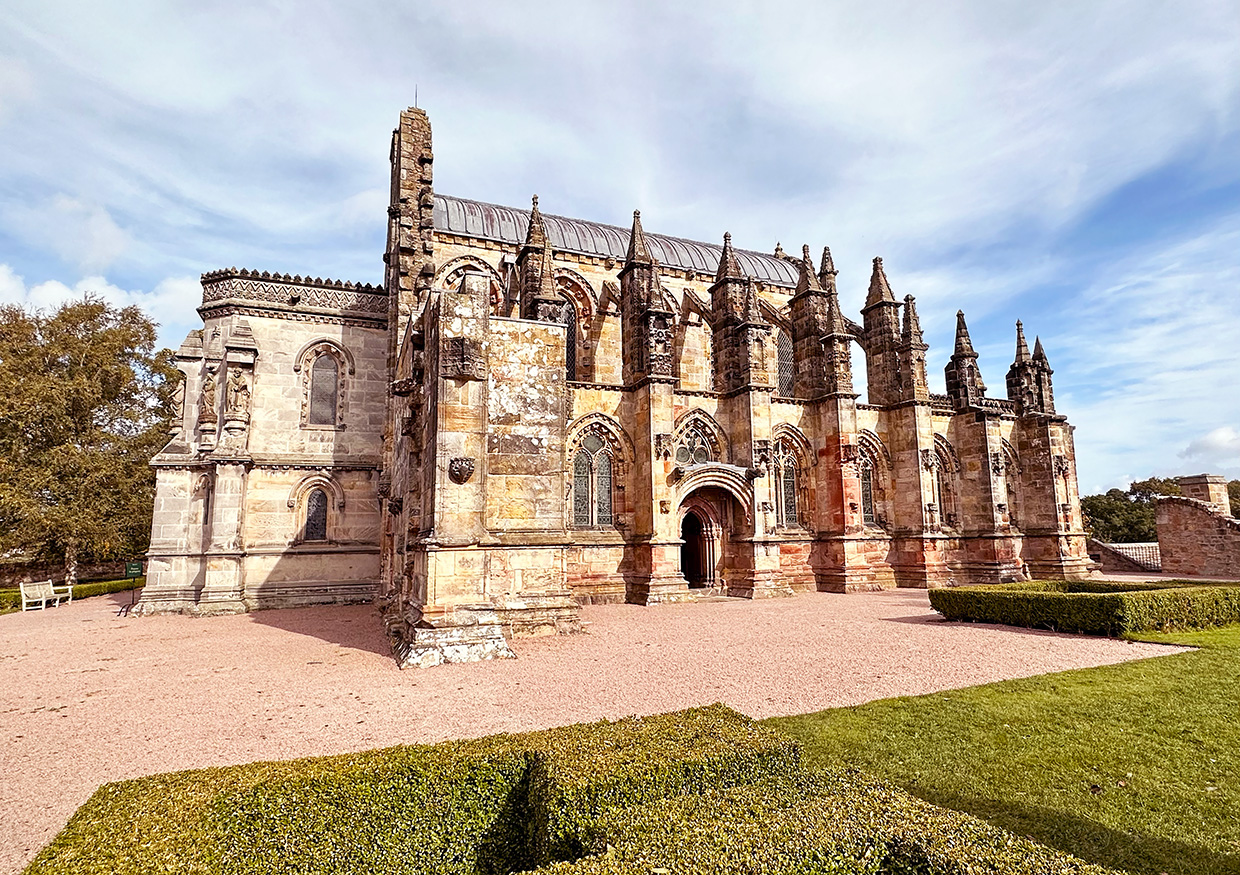
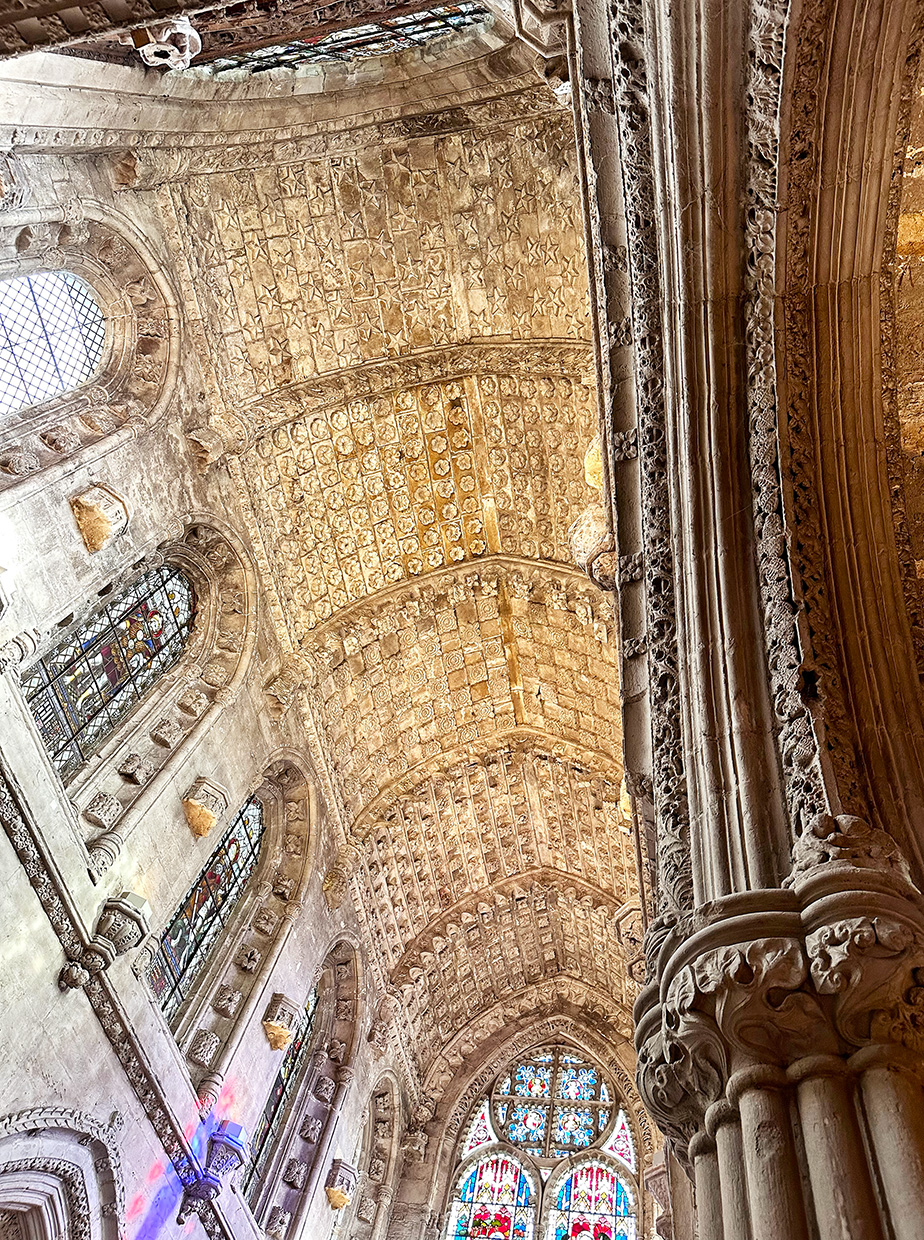
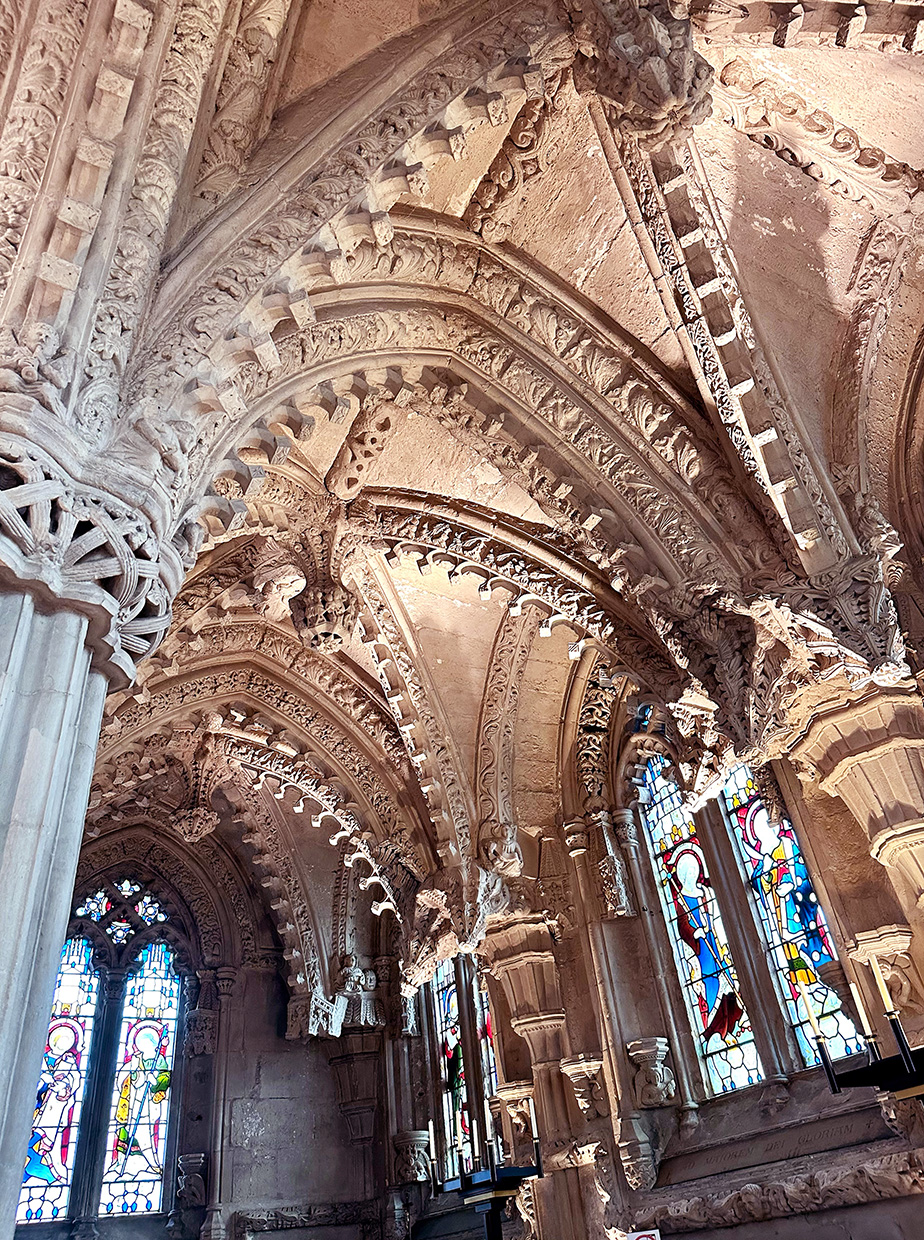
Melrose Abbey
These abbey ruins are just beautiful — and quite impressive.
Located in the less visited Borders region, Melrose Abbey is one of about 4 abbeys in the area.
I saw Melrose and Dryburgh.
And while I liked both, Melrose just seemed so grand.
Because they were doing work to secure the masonry in 2023, you couldn’t get too close to the abbey as they had it fenced off.
But it’s a wowzers site for sure.
Melrose Abbey dates back to 1136 when David I founded Scotland’s first Cistercian monastery.
Due to its location so close to England, Melrose did get attacked a lot.
But it was rebuilt in the 1380’s.
And it was used as an abbey until the Protestant Reformation in 1560.
This historic site in Scotland was so special that Robert the Bruce chose it as the final resting place for his heart.
Location: Town of Melrose in The Borders.
Opened: 1 Apr to 30 Sept: Daily 9.30 to 17:00 (last entry 16:30)
1 Oct to 31 Mar: Daily 10:00 to 16:00 (last entry 15:15)
Entrance fee for adults: £7.50 (this is a reduced price given that you can’t enter into the abbey during the preservation work)
All info can be found here
What I love about it:
It’s just grand!
And I have a thing for Robert the Bruce so anything tied to him is a must see site for me.
I can’t wait to return once they’ve finished the masonry work. I want to go inside the abbey!
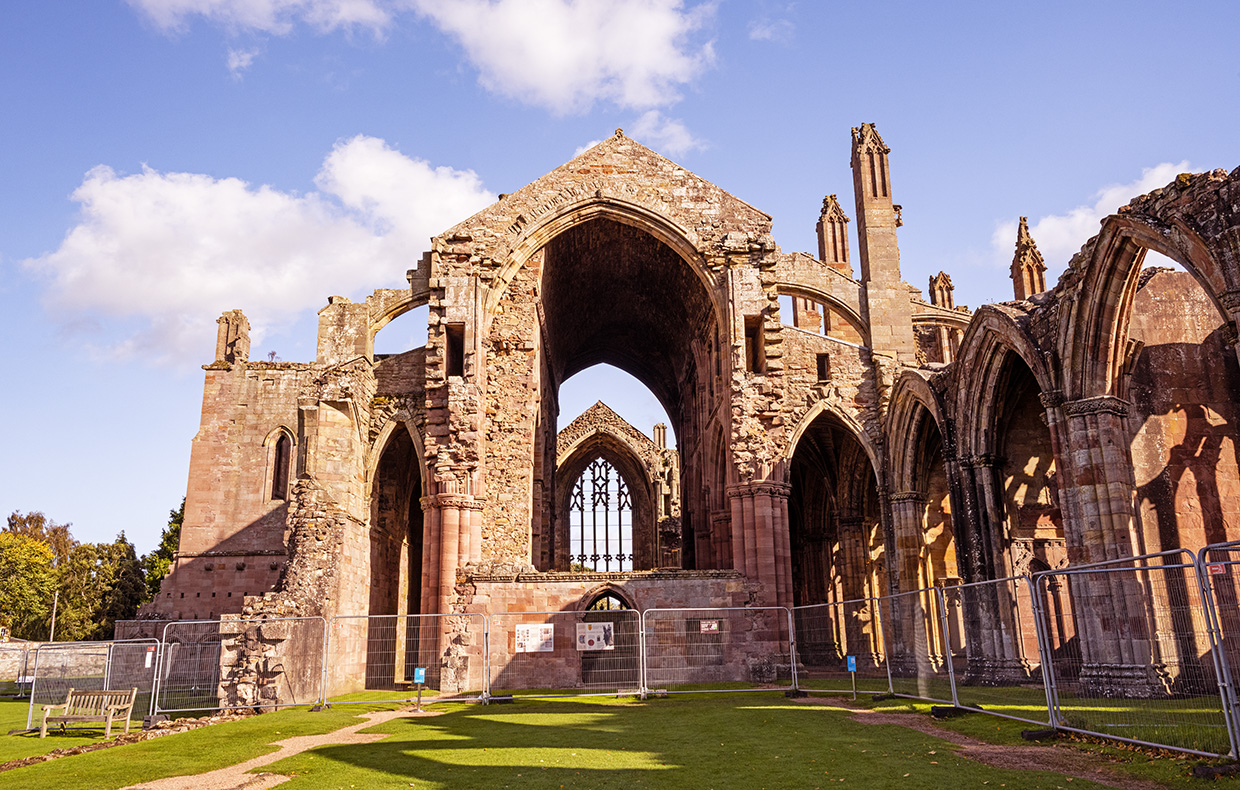
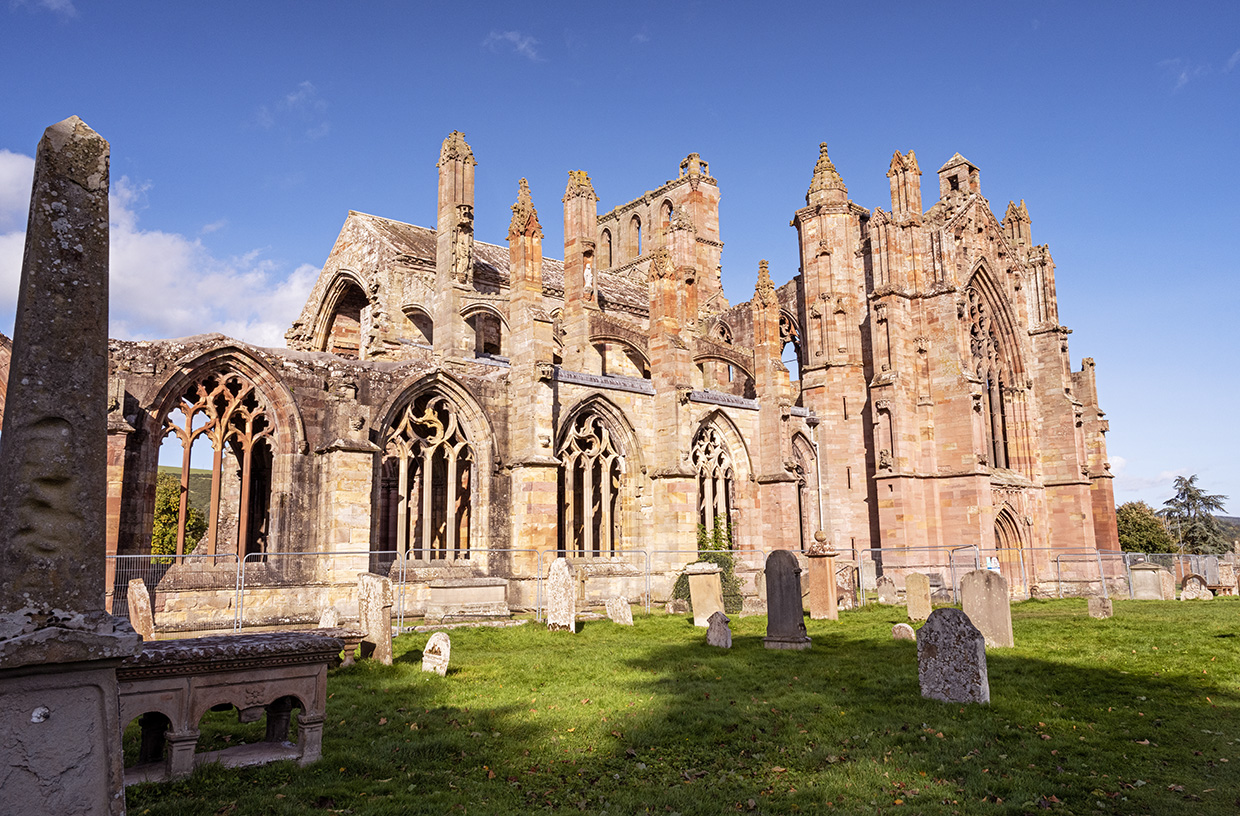
St Clement’s Church Rodel
This historical site in Scotland was not on my radar until the B&B owner on the Isle of Harris told me about it.
And I’m so happy she did.
This wee church at the far south end of the Isle of Harris was built in the early 1500s.
St Clement’s was founded by Alasdair ‘Crotach’ MacLeod of Dunvegan and Harris who was 8th Chief of MacLeod.
And it was built as a burial place for the Clan MacLeod.
Alasdair and his son, William, are both buried in this Medieval church.
The tombs along with the sculptures are fabulous.
In fact, St Clement’s is often called ‘the grandest medieval building in the Western Isles’.
It was definitely a welcome surprise for me.
Location: Settlement of Rodel on the Isle of Harris (Isle of Lewis & Harris).
Opened: 1 Apr to 30 Sept: Daily 9.30 to 17:30 — Last entry 17:00
1 Oct to 31 Mar: Daily 10:00 to 16:00 — Last entry 15:30
Entrance fee for adults: FREE
All info can be found here
What I love about it:
The location is rural and near the sea which is awesome.
But I love how small it is and all the treasures it contains — both inside and then on the outside of the building. Truly a hidden gem!
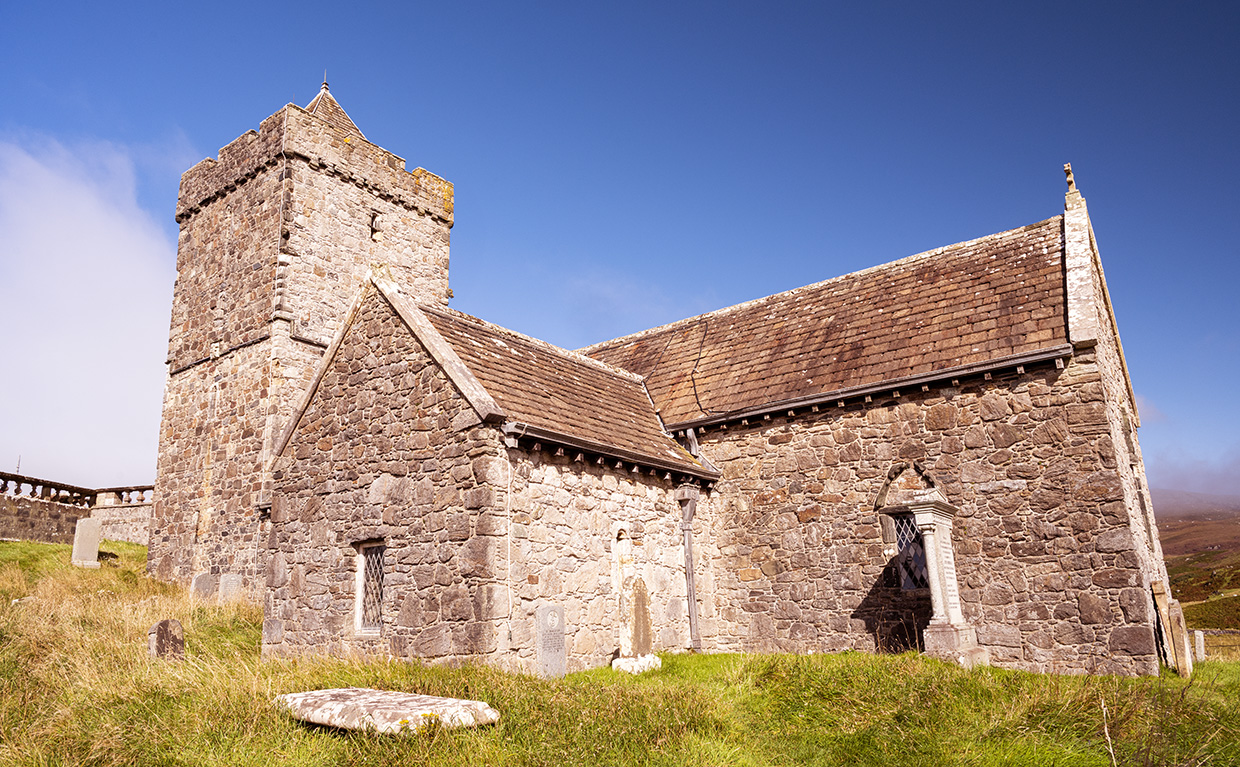
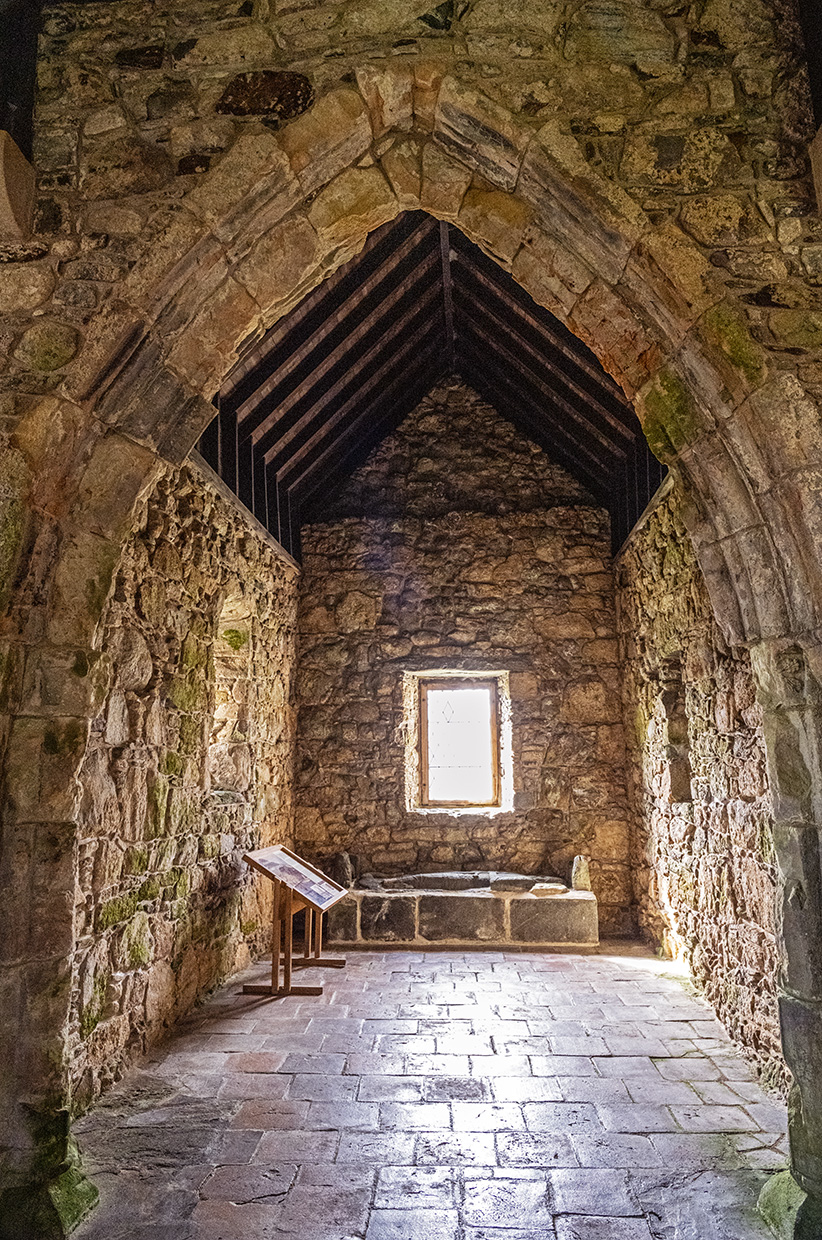
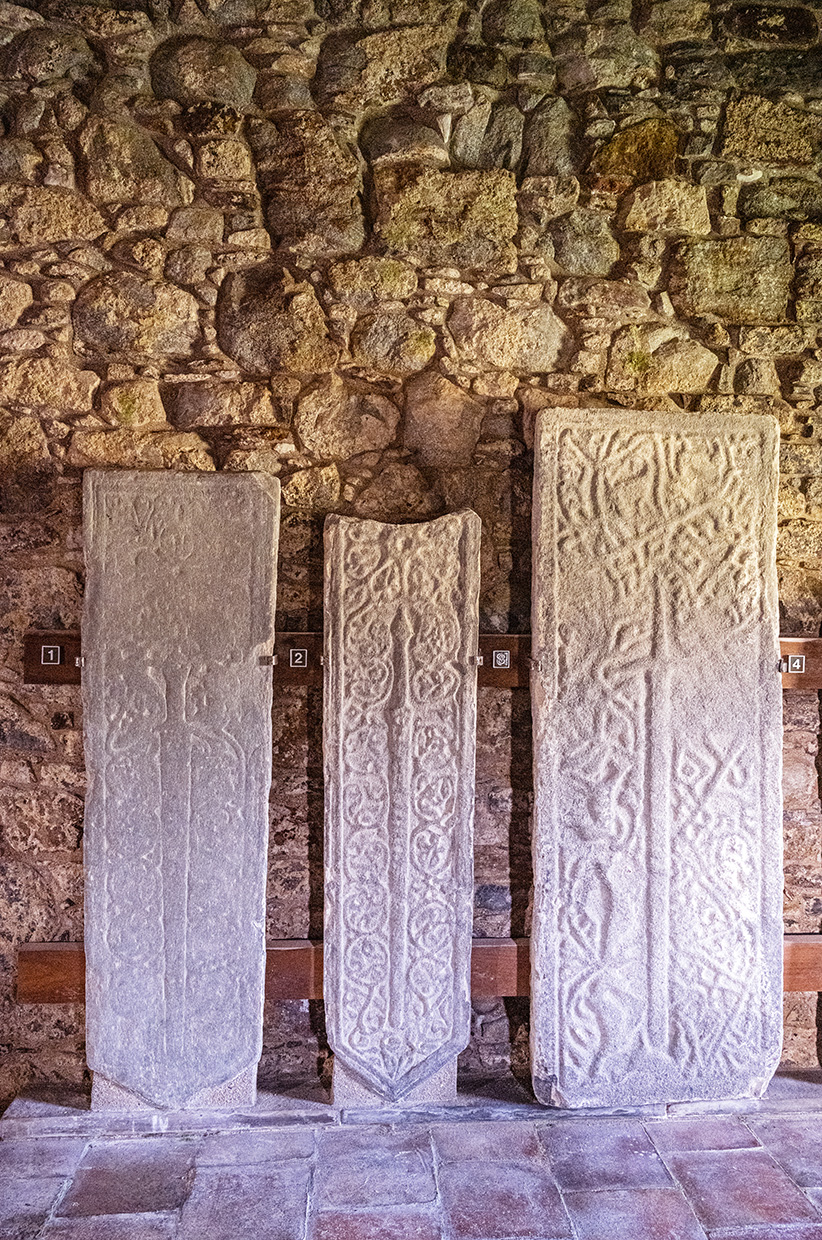
Iona Abbey
This abbey is NOT a hidden gem.
Iona Abbey — on the Isle of Iona — is quite popular.
But it deserves its fame.
Iona Abbey was founded in 563 by St Columba.
Most of the buildings there now date from around 1200 when the Benedictine monks came here.
In between this abbey was raided by the Vikings — on several occasions.
And of course, this historical site in Scotland has been restored in the 1900’s and into the 2000’s.
It really is an important Christian site in Scotland.
In fact, it’s thought that the Book of Kells — now at Trinity College in Dublin, Ireland — were produced here at Iona Abbey.
Definitely one of the most fascinating historical sites in Scotland.
Location: Isle of Iona which lies off the coast of the Isle of Mull.
Opened: 1 Apr to 30 Sept: Mon to Sat 9.30 to 17:30; Sun 12.30 to 17:30 (last entry 17:00)
1 Oct to 31 Mar: Mon to Sat 10:00 to 16:00 (last entry 15:30)
Entrance fee for adults: £10
All info can be found here
What I love about it:
The audio guide provided such a wonderful overview of the history and what life was like for the monks.
The location on the wee island of Iona by the sea is sublime.
And the church with all the stone and high ceilings is just stunning!
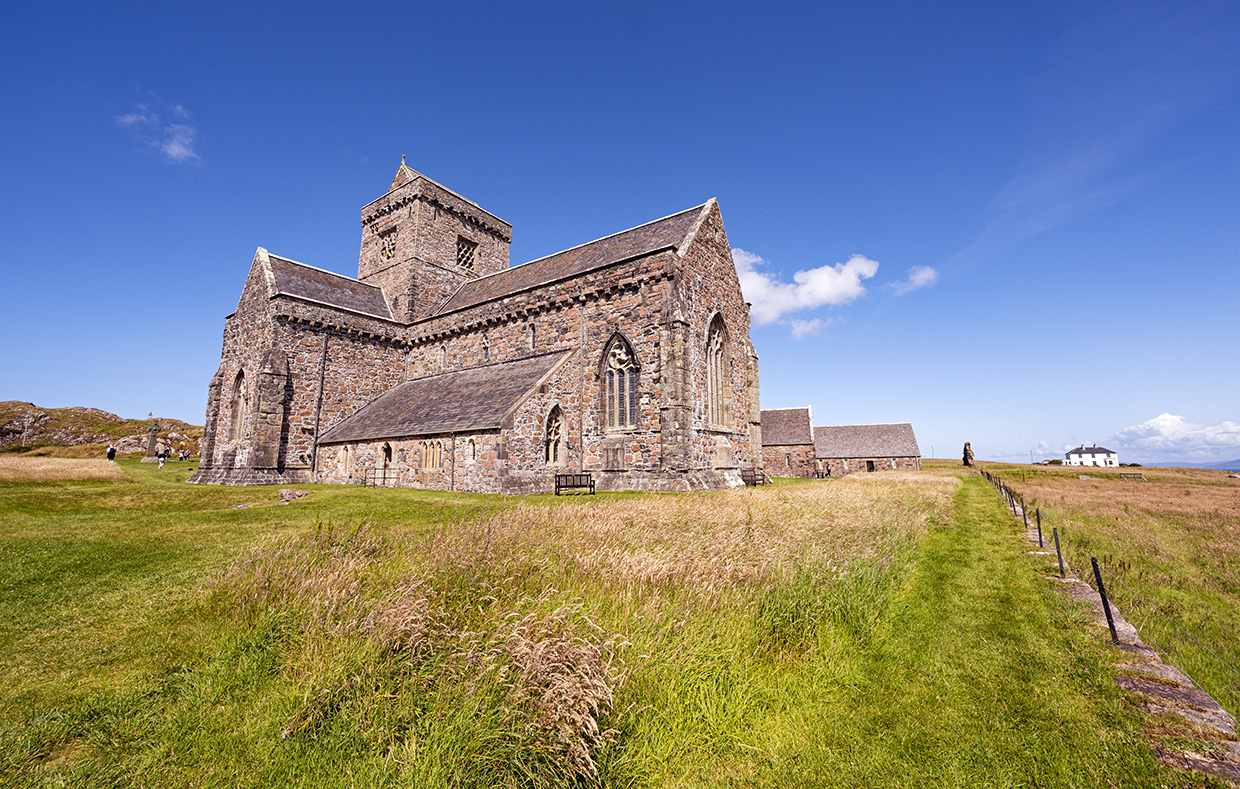
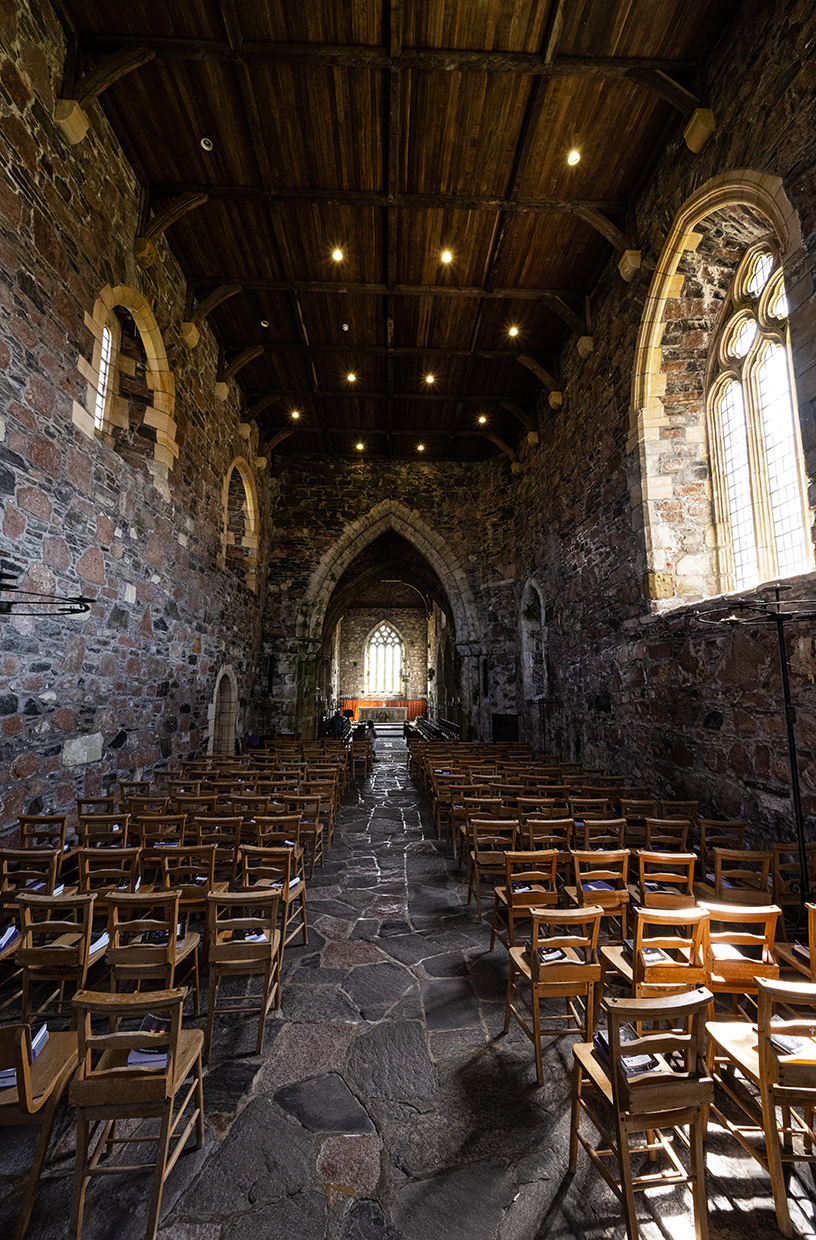
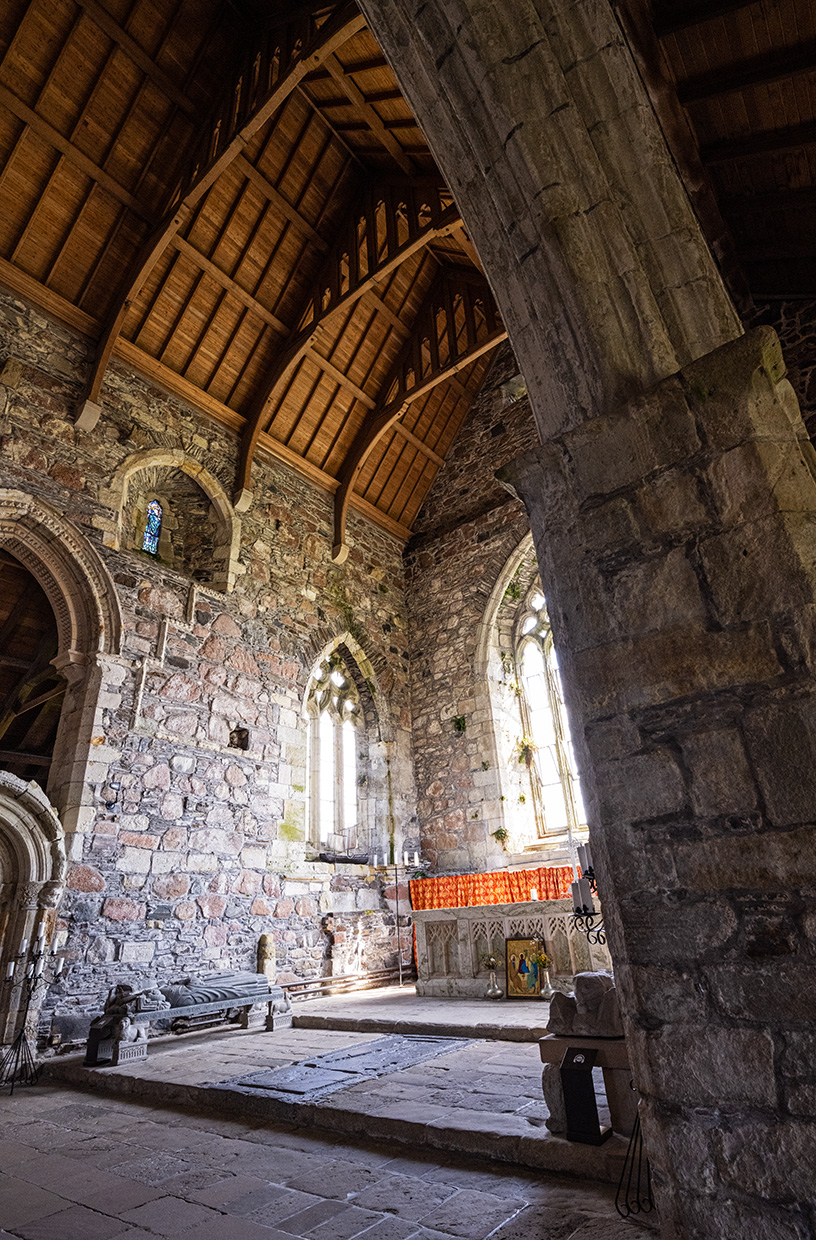
Burial Tombs and Stone Circles/Standing Stones
Calanais/Callanish Standing Stones
Callanish or Calanais is one of the most famous stone circles/standing stones in Scotland and one of the most famous historical sites in Scotland.
And it’s very impressive.
Many of the stones are fairly tall.
Get this — the stones at Calanais were erected between 2900 and 2600 BCE making it older than Stonehenge.
It’s believed that rituals may have continued for 2000 years at these standing stones.
The area inside the circle was eventually leveled and the area became covered with peat between 1000 and 500 BCE.
It was in 1857 when peat was cut in the area that the stones were discovered.
When I visited in 2023, I didn’t realize there were 2 other sites of standing stones nearby to the main site.
I walked over to Calanais 2 and Calanais 3 which are worthy of time.
Calanais 3 had more stones than 2 and, I think, is a bit more impressive.
But I recommend seeing all of them.
Location: Isle of Lewis about 17 miles west of the main town of Stornoway.
Opened: Year round
Note: They are renovating the Visitor Center so the main parking lot will be reduced. Parking will be a bit more difficult during the renovation so please plan accordingly. This also means there will be no facilities during at this time. The plan is to be re-opened in 2026 with a lovely new and improved Visitor Experience.
Entrance fee for adults: Free
All info can be found here
What I love about it:
The location kind of in the middle of peaty bogland but up on a wee hill is fab!
I love getting up close and personal with the stones as well. You can’t do this at Stonehenge!
Add in the 2 other sites that are walkable (about a mile or so away) and Calanais is a fantastic site.
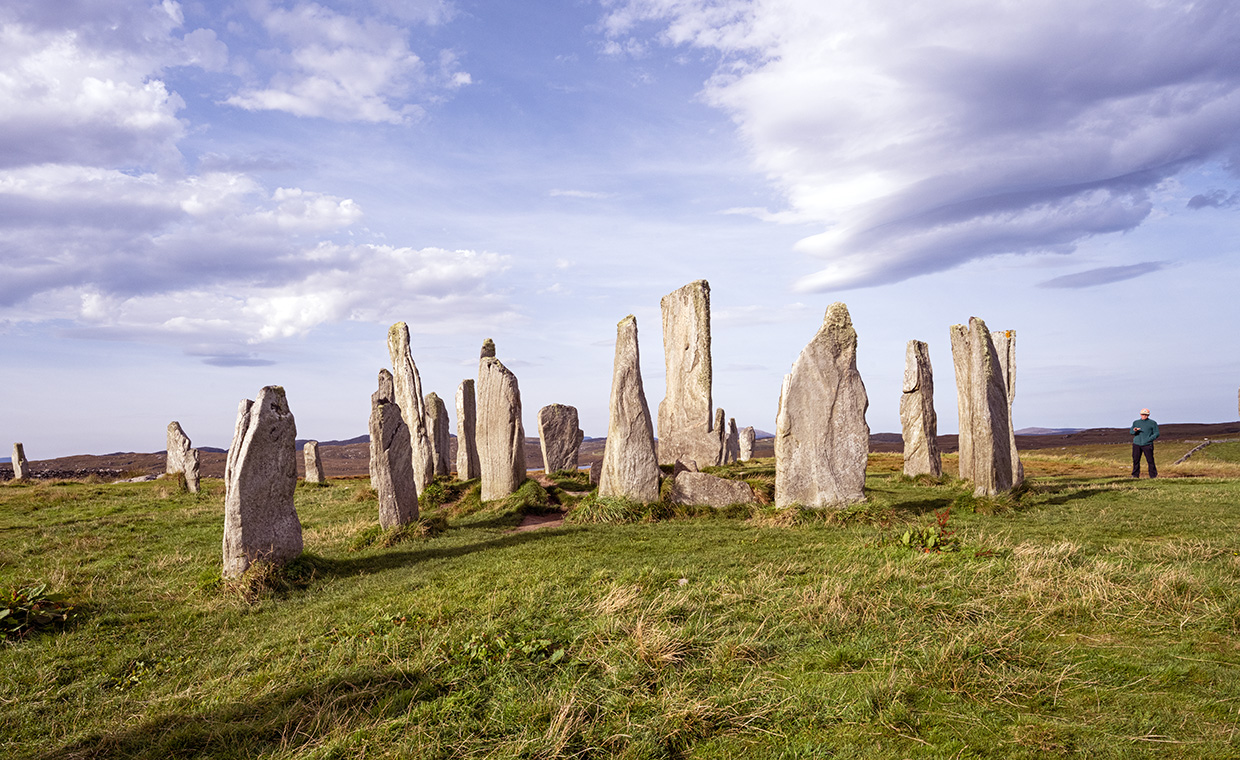
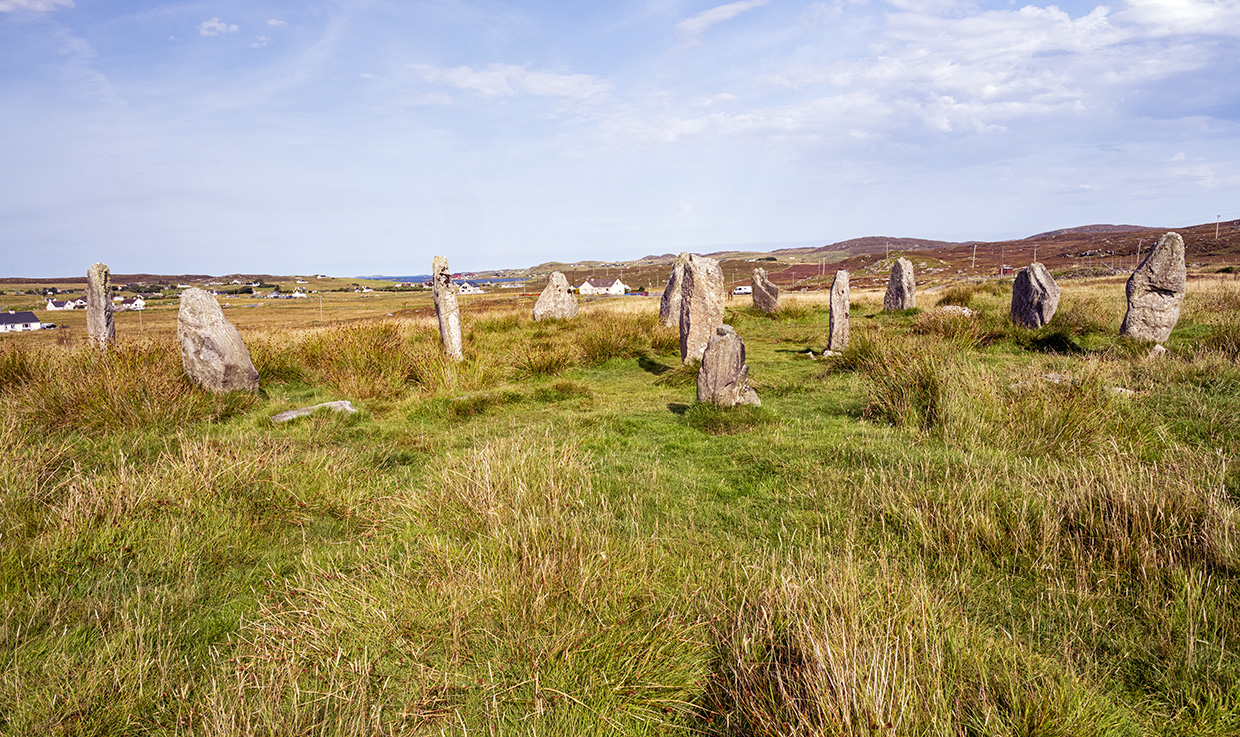
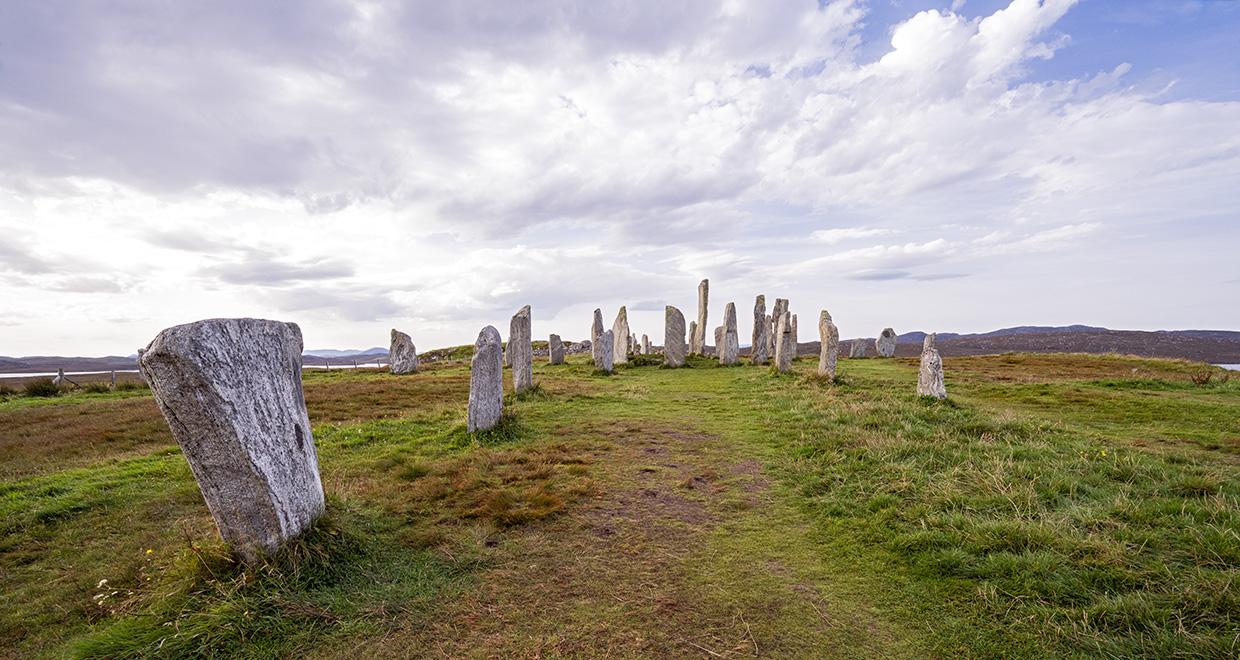
Kilmartin Glen
If you’ve been in the Wander Your Way orbit for a year or so, then you know that Kilmartin Glen is one of my absolute favorite historical sites in Scotland.
This site is a collection of burial tombs, stone circles, standing stones and rock carvings.
There are actually over 350 ancient monuments at Kilmartin — 150 of these are prehistoric.
And this all lies within about 6 miles of the village of Kilmartin.
It’s another one of those historical sites that you can get up close to which I just love.
I actually went inside 2 of the burial cairns.
There is a lot to take in at Kilmartin so give yourself the day to explore.
Be sure to visit the museum and visitor center which is outstanding.
And just to the south of these stones and cairns is Dunadd Fort.
This was home to a fort about 2000 years ago (so AD times).
It was a royal power center of Gaelic Kings from 500 to 800AD.
You can take a trail up this hill and put your foot into a stone where the Kings of Scotland once put their feet.
It’s very cool!
Location: Region of Argyll about 29 miles south of Oban.
Opened: The outdoor sites are open year round.
Kilmartin Museum Opened: 1st February to 28th February 2025: Wednesday to Sunday 11:00 to 16:00 (last entry 15:00)
1st March to 31st October 2025: 7 days a week 10:00 to 17:00 (last entry 16:00)
Entrance fee for adults: Free for the outdoor sites. £8.65 for the museum.
All info can be found here and here
What I love about it:
What don’t I love?
Seriously. I just love the aura and mystery.
I love getting up close and personal to the stones and even into these sites.
The museum has some amazing pieces as well. It’s just an incredible site.
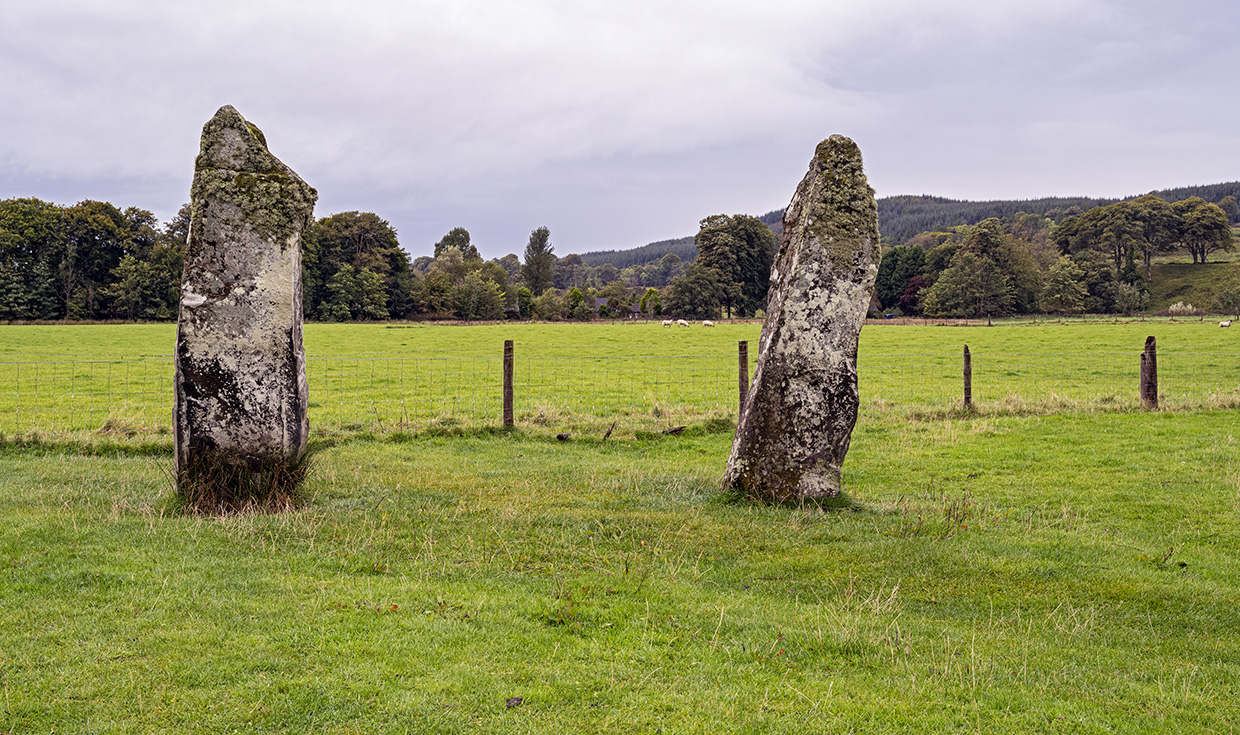
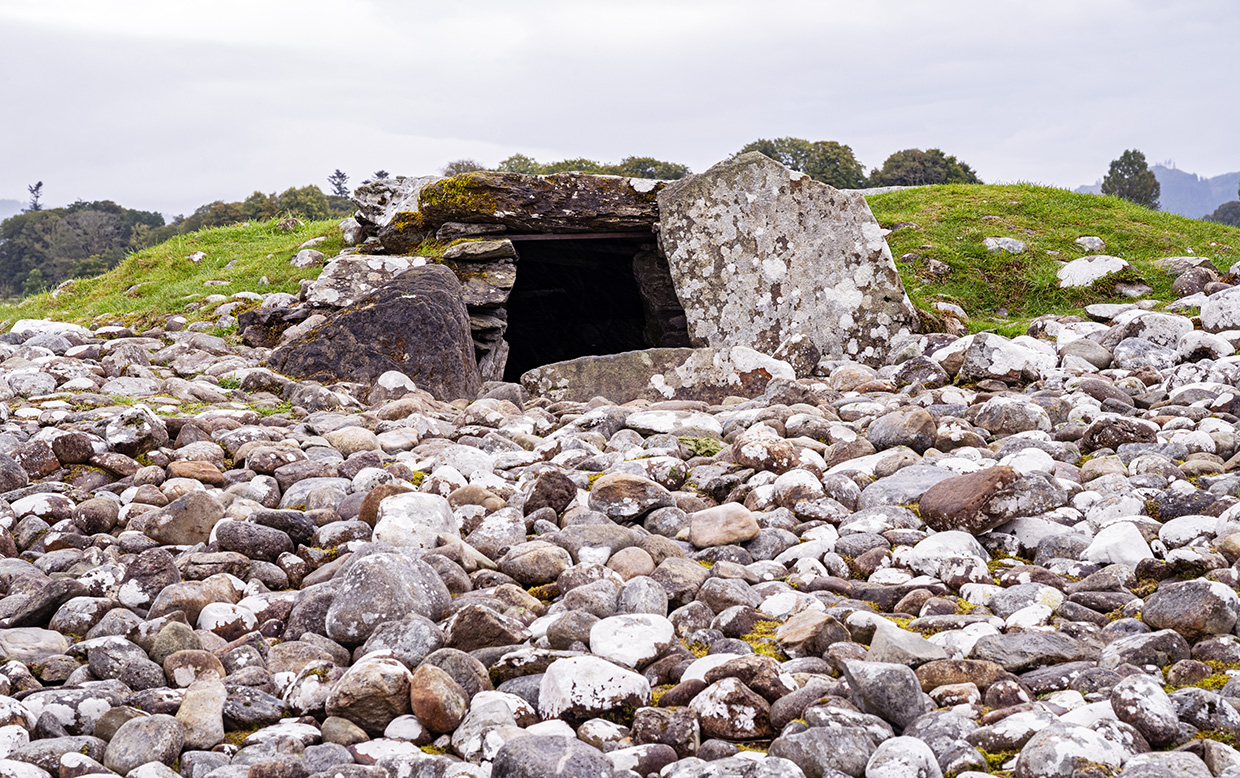
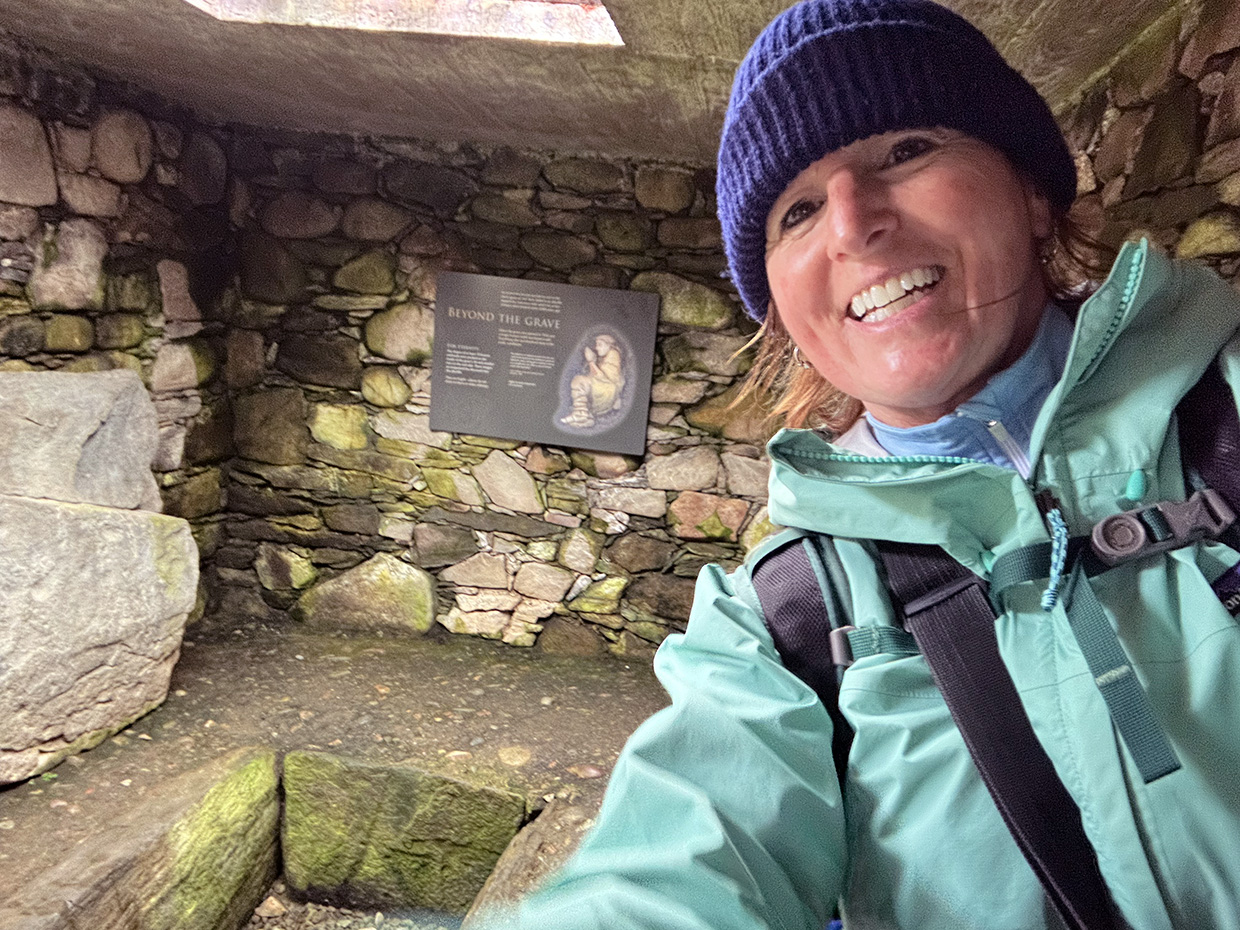
Widget not in any sidebars
Military sites
Culloden Battlefield and Visitor Center
Culloden Battlefield is another of my absolute favorite historical sites in Scotland.
This is where the Jacobites met their demise and where the English Hanoverian kings kept the British throne.
It was on April 16, 1746 that the Jacobites, who wanted to restore the Stuart monarchy to the British thrones, fought and lost horribly.
1300 men lost their lives — 1250 of which were Jacobites.
The Battlefield is a somber, yet beautiful place to walk around with placards to guide you.
And the visitor center walks you through the events — showing both the Jacobite side and the Government side of the story.
There are memorials to the various Highland clans as well.
If you love military history, you have to visit Culloden.
Location: Highlands about 5 miles East of Inverness.
Opened: Culloden Battlefield is open year round.
The Visitor Center is open: 3 Jan to 6 Apr: Daily 9:00–16:00
7 Apr to 1 Jun: Daily 9:00–17:00
Entrance fee for adults: Free for the Battlefield. £12 for the Visitor Center. (worth it!) or £16 for the Visitor Center + Guided Battlefield tour.
All info can be found here
What I love about it:
While it’s a sad place given the loss of life, Culloden is such an important part of Scottish and English history.
I’m fascinated by the Jacobites and their cause and am trying to learn more. This is a cause that divided families so there are many stories.
The Visitor Center is very informative and the Battlefield is grim and bleak yet alluring.
I just love it!
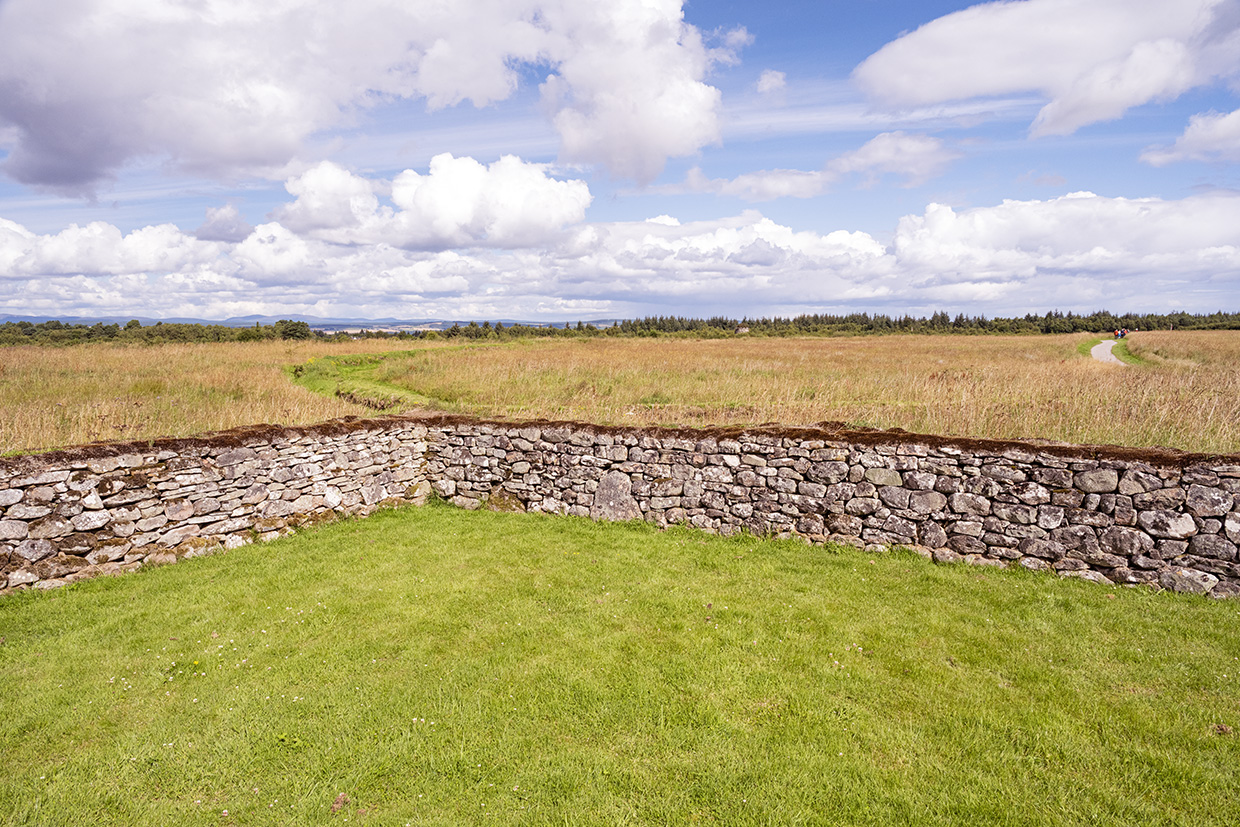
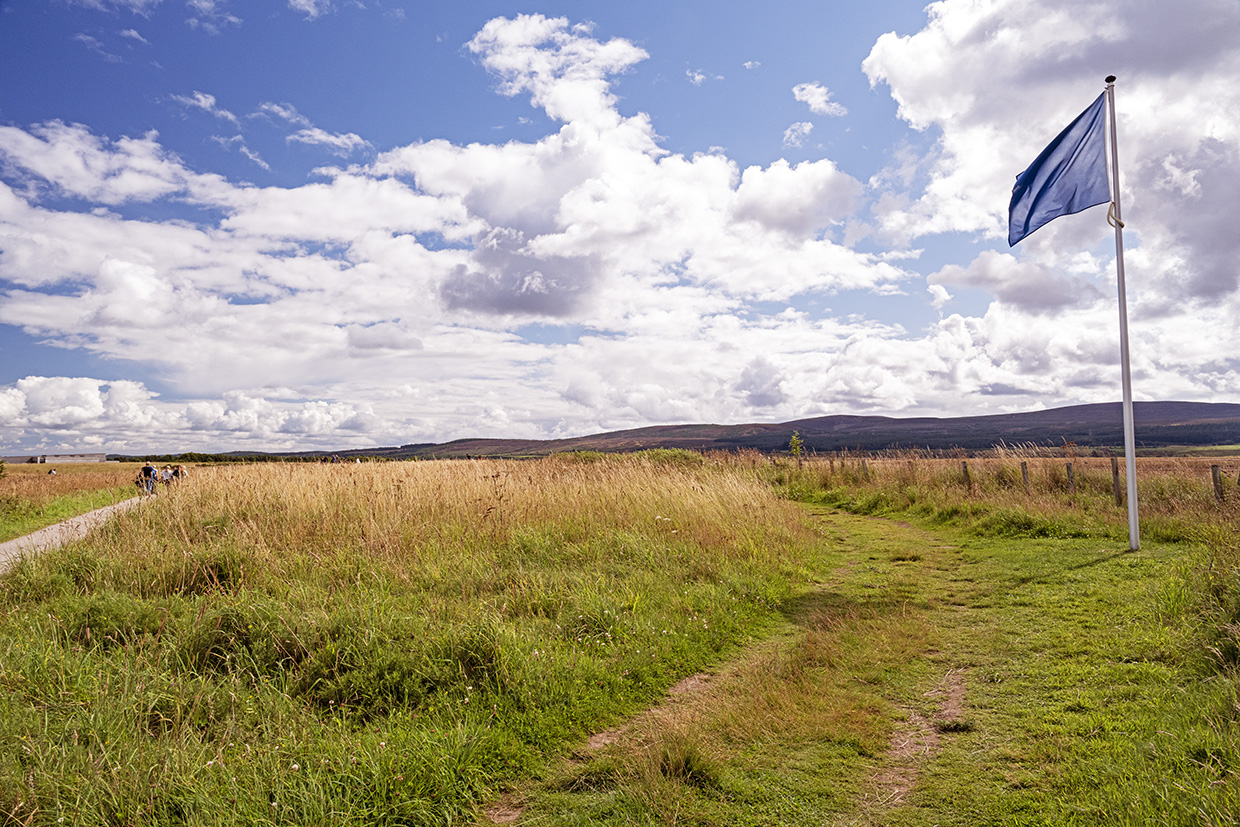
So there are my 11 favorite historical sites in Scotland
Scotland is a wonderful country for historical sites.
I think the good thing about it is that you can find historical sites in so many different places — in cities and towns, by the sea, in the hills and glens and even the mountains.
So if, like me, you’re not a city person, you can still get your history fix in the beautiful landscapes and seascapes of the country.
I have more historical sites in Scotland I want to visit.
Here are a few that are at the top of my list:
- Skara Brae (Orkney)
- Scone Palace (Perthshire)
- Dunrobin (Highlands)
- Ring of Brodgar (Orkney)
- Drum Castle (Aberdeenshire)
- Inveraray Castle (Argyll)
- Holyrood Palace (Edinburgh)
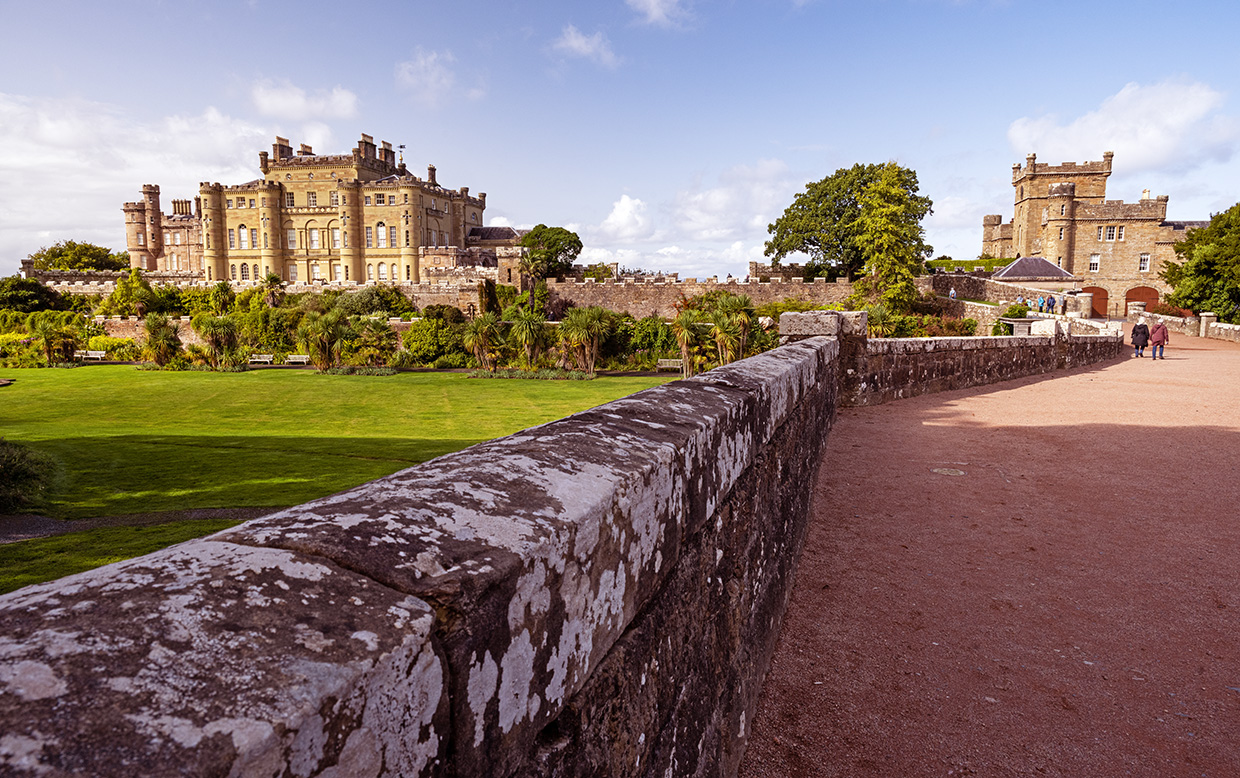
Disclaimer: This post contains affiliate links. This means I will earn a commission – at no extra cost to you — if you click on the link and purchase anything from these trusted companies. It helps Wander Your Way, a small business, stay in business. Thanks for your support!
Like it? Pin it!
